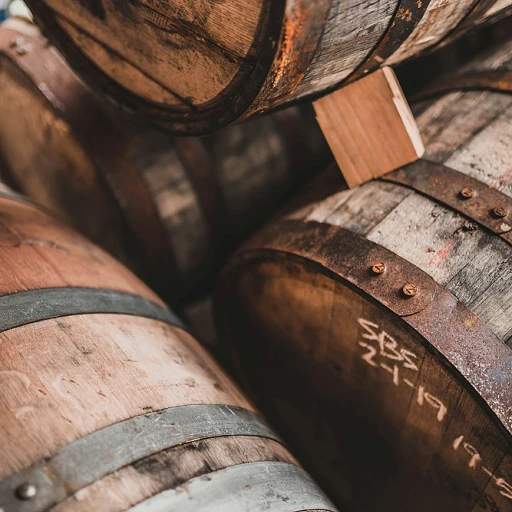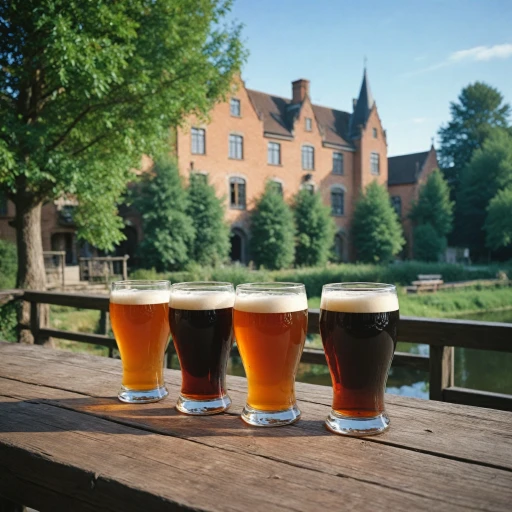
Understanding Beer Foam and Its Importance
The Magic Behind the Bubbles
Beer foam, often seen as a simple topping to your favorite brew, plays a more significant role than you might initially think. It is not just about aesthetic appeal; beer foam provides an essential sensory experience, contributing to both the taste and aroma of beer. The presence and quality of foam can vary according to brewing techniques, ingredients, and even pouring methods.
A well-formed head of foam can enhance your beer-tasting experience by releasing aromas that elevate the flavors in your drink. Depending on the style of beer, foam can protect the liquid underneath from oxidation, maintaining the beer's fresh taste longer.
For those interested in traditional methods of fermentation, understanding beer foam is crucial, as it often signifies the quality and craftsmanship behind the brew. Each bubble within the foam represents fermentation's magic at work, capturing carbon dioxide produced during the brewing process.
As we delve into various pouring traditions, you'll discover that techniques such as those employed in Czech Republic showcase how foam is used differently to create unique drinking experiences. By understanding the dynamics of foam and its contribution to your pint, you will gain a deeper appreciation for the art of beer pouring and what it represents within different cultures worldwide.
Czech Pouring Techniques: Hladinka, Snyt, and Mliko
Intricate Czech Pouring Tactics
Czech beer culture offers a fascinating insight into traditional pouring techniques that have been perfected over generations. With a focus on foam, the Czech Republic is renowned for its distinct pouring styles such as Hladinka, Snyt, and Mliko. Each style serves a unique purpose and showcases the artistry behind the perfect pour.- Hladinka: This technique emphasizes a dense, creamy head by pouring the beer straight from the tap at a 45-degree angle. The result is a well-balanced drink with approximately one inch of foam that delicately enhances the beer's aroma and flavor.
- Snyt: Known as the "quick beer," Snyt offers a shorter pour with a larger head, typically filling only two-thirds of the glass with liquid. This method is perfect for enjoying the beer's sensory attributes without commitment to a full pint.
- Mliko: Translating to "milk pour," Mliko creates a glassful of foam with only a small amount of beer at the bottom. It's often savored quickly due to its delicate and frothy texture, providing a unique tasting experience.
The Role of the Lukr Faucet in Perfect Pours
The Lukr Faucet: Key to Ideal Czech Pouring
When it comes to achieving the perfect pour and creating the iconic Czech foam styles like hladinka, snyt, and mliko, one essential tool stands out: the Lukr faucet. This specially designed tap has become a cornerstone in the process of crafting artful pours and elevating the drinking experience. The Lukr faucet enhances control over the flow and pressure, which is crucial for generating the desired level of foam and head retention. Its unique ability to open and close smoothly allows bartenders to expertly create a perfectly foamy head that is both aesthetically pleasing and enhances the flavor profile of the beer. The role of this specialized faucet cannot be understated, as it works in tandem with traditional Czech pouring methods to produce optimal results. As American craft beer enthusiasts continue to explore and appreciate diverse beer cultures, the Lukr faucet's influence is also making its way across the Atlantic. For those interested in seeing the Lukr faucet in action, Boston's vibrant beer scene offers fantastic opportunities. To experience this artistry firsthand, consider visiting local favorites in Boston where you can indulge in unique pours that celebrate tradition and innovation alike.
- + Versatile use for cocktails, water, beer, and juice
- + Dishwasher safe for easy cleaning
- + Made with a heavy base for stability
- + Tall design for enhanced presentation
- + Suitable for various occasions like parties and bars
Craft Beer and Pouring Styles in the United States
Craft Beer Revolution: An American Perspective
The United States has become a fertile ground for craft beer innovation, evolving to offer a rich and dynamic perspective on beer pouring and foam aesthetics. American breweries have embraced a diversity of styles and techniques, taking inspiration from traditional practices around the globe, yet adding their own distinct twist.
Craft breweries have been pivotal in popularizing unique beer styles, and with that, innovative serving methods. American brewers often experiment with ingredients and brewing techniques, aiming to create unique textures and flavors that showcase the character of their products. The craft beer revolution in the US has not only expanded the variety of tastes and experiences but has also encouraged a diverse approach to pouring.
Foam Artistry: Elevating the Beer Experience
A distinct trait of the American craft beer scene is its creative approach to serving and presentation. Bartenders in craft breweries often treat the beer pour as a form of art, carefully crafting beer foam to accentuate a beer's features. Foam artistry is not just about aesthetics; it's about enhancing the sensory experience, making each pint a sensory celebration.
The serving techniques may vary broadly—from the precise angles and pouring speeds to the custom-designed glassware—all aiming to strike a perfect harmony between aroma, taste, and visual appeal. Craft beer enthusiasts appreciate this attention to detail, valuing the craftsmanship that enhances their beverage enjoyment.
Embracing Tradition While Forging Ahead
Though the focus is often on innovation, American brewers do not shy away from embracing and adapting traditional European pouring techniques. Whether it's the Czech-style pours or the British-inspired cask ales, these methods are harmonized with American ingenuity and creativity. This symbiotic relationship between honoring the past and forging new paths marks the US craft beer industry as a vibrant and ever-evolving landscape.
The Future of Beer Foam and Pouring Innovations
Foam's Evolution in the Brewing Industry
Looking towards the future, it's clear that beer foam continues to capture the interest of brewers and consumers alike. The traditional Czech pouring techniques and innovations such as the Lukr faucet have set the bar high. However, this only scratches the surface of the potential that beer foam holds.
The craft beer movement, particularly in the United States, is a driving force behind new developments. Brewers are experimenting with various hops, malts, and yeasts to create unique foams that not only enhance flavor but also serve as a visual delight. The art of pouring is being elevated to new heights with customized glassware and innovative taps that ensure the perfect head every time.
As breweries continue to push boundaries, technological advancements play a crucial role. The use of smart faucets and automated pouring systems is gaining traction. These innovations promise precision and consistency, making sure that each pour replicates the intended experience designed by the brewmaster.
Furthermore, we're seeing the merging of beer and beverage science, where researchers are diving into the molecular structure of foam, aiming to create sustainable and even healthier beers without compromising on the sensory experience. With the growing focus on environmental sustainability, brewers are also exploring ways to reduce waste during the pouring process, all while maintaining high-quality foam.
In conclusion, the future of beer foam is about blending tradition with innovation, the old with the new, to create a drinking experience that is as delightful as it is memorable. Staying ahead in this artistic pursuit requires a deep appreciation of history, a willingness to embrace change, and a never-ending quest for perfection.















